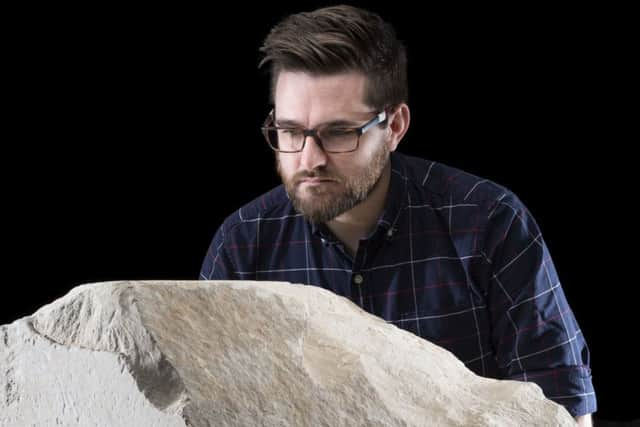Egypt warns National Museum of Scotland pyramid stone exhibit may be illegal
Egyptian embassy officials have contacted the National Museum of Scotland (NMS) in Edinburgh to demand proof that they legally own the rare artefact.
The casing stone is from the Great Pyramid of Giza and will be exhibited at the museum for the first time since it came to Edinburgh in 1872. It will be the only casing stone from the pyramid to be displayed anywhere outside Egypt.
Advertisement
Hide AdAdvertisement
Hide AdThe museum announced it will be put on display next month to mark the bicentenary of the birth of the man who arranged for it to be brought to the UK, Charles Piazzi Smyth.


However, Egypt’s Ministry of Antiquities have said they will demand the stone is returned to Egypt if the museum cannot provide documentation that it was legally imported into the country.
The large block of fine white limestone is one of the few surviving casing stones from the Great Pyramid which formed the outer surface of the pyramids.
It will form the centrepiece of the new gallery, Ancient Egypt Rediscovered, from 8 February. Built for King Khufu and dating to 2589-2566 BC, the Great Pyramid of Giza is the oldest and largest of the three pyramids there.
It was clad in bright white, polished limestone brought from a quarry at Tura, more than nine miles down the Nile.
The stones formed the outer surface of the pyramids and are identifiable by their sloped, triangular faces.
National Museums of Scotland are considering their response to the request from Egypt. They said the stone was discovered among loose rubble at the base of the pyramid in 1869 and brought to the UK three years later by an English engineer called Waynman Dixon.
Dixon was carrying out investigative work at Giza for Smyth, who was then the Astronomer Royal for Scotland.
Advertisement
Hide AdAdvertisement
Hide AdSmyth was interested in the dimensions of the Great Pyramid and the stone was brought back to Edinburgh for him.
The stone was originally displayed in his Edinburgh home in a custom-made glass case. It was donated to the National Museums by the Royal Observatory in 1955.
Egypt’s Ministry of Antiquities said: “We have addressed the Egyptian Ministry of Foreign Affairs to take all necessary action to contact the Scottish authorities and the National Museum of Scotland to communicate the documents of ownership and export certificates of that stone mass, the method of exit from Egypt and the date of obtaining it. The current Egyptian law on the protection of effects criminalises trafficking in effects. They are not allowed to be exported and are considered public funds. If the mass or any other artefact were to be found removed illegally, all necessary action would be taken to recover it.”
A spokeswoman for National Museums Scotland said: “It was brought to the UK by British engineer Waynman Dixon in 1872. We have received a communication from the Embassy of the Arab Republic of Egypt regarding this object.”